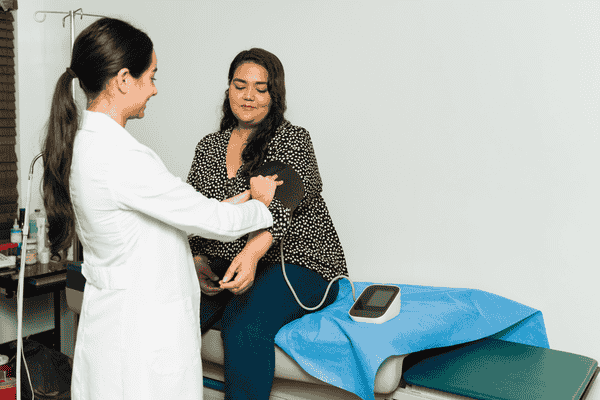Introduction
Imagine an elderly couple, Jane and John, both in their late 70s, who have been living a peaceful retired life in a quiet suburban neighborhood. They love their morning walks, enjoy gardening together, and cherish visits from their grandchildren. However, there’s one concern that has been looming over their heads: hypertension. Jane and John have both been diagnosed with high blood pressure, but they’ve noticed that their experiences with managing the condition are quite different. This story delves into how dietary habits, influenced by gender-specific factors, play a crucial role in managing hypertension in older adults.
The Beginning of Awareness
Jane first noticed her rising blood pressure readings during a routine check-up. Her doctor advised her to cut down on salt and increase her intake of fruits and vegetables. Meanwhile, John was experiencing similar issues but found himself dealing with higher spikes in blood pressure after meals. Their doctor explained that while manage hypertension affects both men and women, the risk factors and effective management strategies can differ based on gender.
Understanding Gender Disparities in Hypertension
Hypertension, commonly known as high blood pressure, is a condition that affects millions of older adults worldwide. However, studies have shown that the prevalence and risk factors for hypertension can vary significantly between men and women.
Women and Hypertension
For women like Jane, hormonal changes, especially post-menopause, play a significant role in the development of hypertension. The decline in estrogen levels can lead to increased blood pressure. Women are also more likely to experience hypertension as a side effect of certain medications, and they may be more sensitive to dietary sodium.
Men and Hypertension
Men like John tend to develop hypertension earlier than women. Factors such as higher rates of smoking, alcohol consumption, and greater physical activity levels (or lack thereof) contribute to this early onset. Men’s bodies may also respond differently to dietary fats and cholesterol, impacting their blood pressure.
Jane’s Journey: Adopting Heart-Healthy Dietary Habits
Jane decided to take her doctor’s advice to heart and made significant changes to her diet. She began by reducing her sodium intake. She switched from processed foods to fresh, home-cooked meals. Jane discovered the DASH (Dietary Approaches to Stop Hypertension) diet, which emphasizes fruits, vegetables, whole grains, and low-fat dairy products. She started incorporating more potassium-rich foods like bananas, sweet potatoes, and spinach into her meals, which helped balance the effects of sodium and lower her blood pressure.
Jane’s Favorite Recipes
Jane loved experimenting with new recipes. One of her favorites became a colorful quinoa salad with diced cucumbers, cherry tomatoes, red onions, and a sprinkle of feta cheese. She dressed it with a simple vinaigrette of olive oil, lemon juice, and a pinch of black pepper. This salad was not only delicious but also packed with nutrients that supported her heart health.
John’s Journey: Finding Balance
John, on the other hand, found it challenging to give up his favorite salty snacks and red meat dishes. He learned that moderation was key. Instead of completely cutting out his favorite foods, he looked for healthier alternatives and portion control. John reduced his intake of processed meats and opted for lean protein sources like chicken, fish, and plant-based proteins.
John’s Go-To Meals
John’s favorite new dish became grilled salmon with a side of roasted vegetables. He marinated the salmon in a mixture of olive oil, garlic, lemon juice, and fresh herbs. The roasted vegetables – a medley of bell peppers, zucchini, and carrots – were lightly seasoned with herbs and a small amount of salt. This meal satisfied his taste buds while helping him manage his blood pressure.
Practical Tips for Gender-Specific Dietary Management
Both Jane and John’s stories highlight the importance of personalized dietary habits in managing hypertension. Here are some practical tips that cater to gender-specific needs:
For Women
- Embrace the DASH Diet: Focus on fruits, vegetables, whole grains, and low-fat dairy. Include potassium-rich foods to counteract sodium’s effects.
- Watch Sodium Intake: Women may be more sensitive to sodium, so aim to keep daily intake below 1,500 milligrams.
- Increase Calcium and Magnesium: These nutrients are vital for heart health. Include dairy products, leafy greens, and nuts in your diet.
- Stay Hydrated: Proper hydration helps maintain healthy blood pressure levels. Aim for at least eight glasses of water a day.
For Men
- Moderate Alcohol Consumption: Limit alcohol intake to no more than two drinks per day.
- Choose Lean Proteins: Opt for chicken, fish, beans, and legumes over red and processed meats.
- Incorporate Omega-3 Fatty Acids: These healthy fats, found in fish like salmon and mackerel, can help reduce blood pressure.
- Maintain a Balanced Diet: Include a variety of foods to ensure you get essential nutrients without overloading on fats and cholesterol.
Overcoming Challenges Together
Jane and John found that supporting each other made their dietary changes more manageable. They started cooking together, experimenting with new recipes, and enjoying heart-healthy meals as a team. They also joined a local community group that focused on healthy living, where they could share their experiences and learn from others facing similar challenges.
The Role of Professional Guidance
Consulting with healthcare professionals, such as dietitians or nutritionists, can provide personalized advice and support. Jane and John regularly checked in with their doctor to monitor their progress and make necessary adjustments to their diet and lifestyle.
Conclusion
Jane and John’s story illustrates that managing hypertension in older adults requires a tailored approach, considering gender-specific factors and individual preferences. By embracing heart-healthy dietary habits and supporting each other, they were able to significantly improve their blood pressure and overall well-being. Whether it’s adopting the DASH diet, moderating sodium intake, or finding balanced meals, the journey to better heart health is a shared adventure that can lead to a healthier, happier life.














Explore the future of gaming with Empire of Musk – an innovative Web3 experience! Grow your business empire free of in-app purchases. Boost your ventures to amplify your revenue stream. Engage, accumulate, and eventually exchange in-game currency for real money. Enter the Empire of Musk now and shape your virtual wealth! URL https://gourl.tech/empire